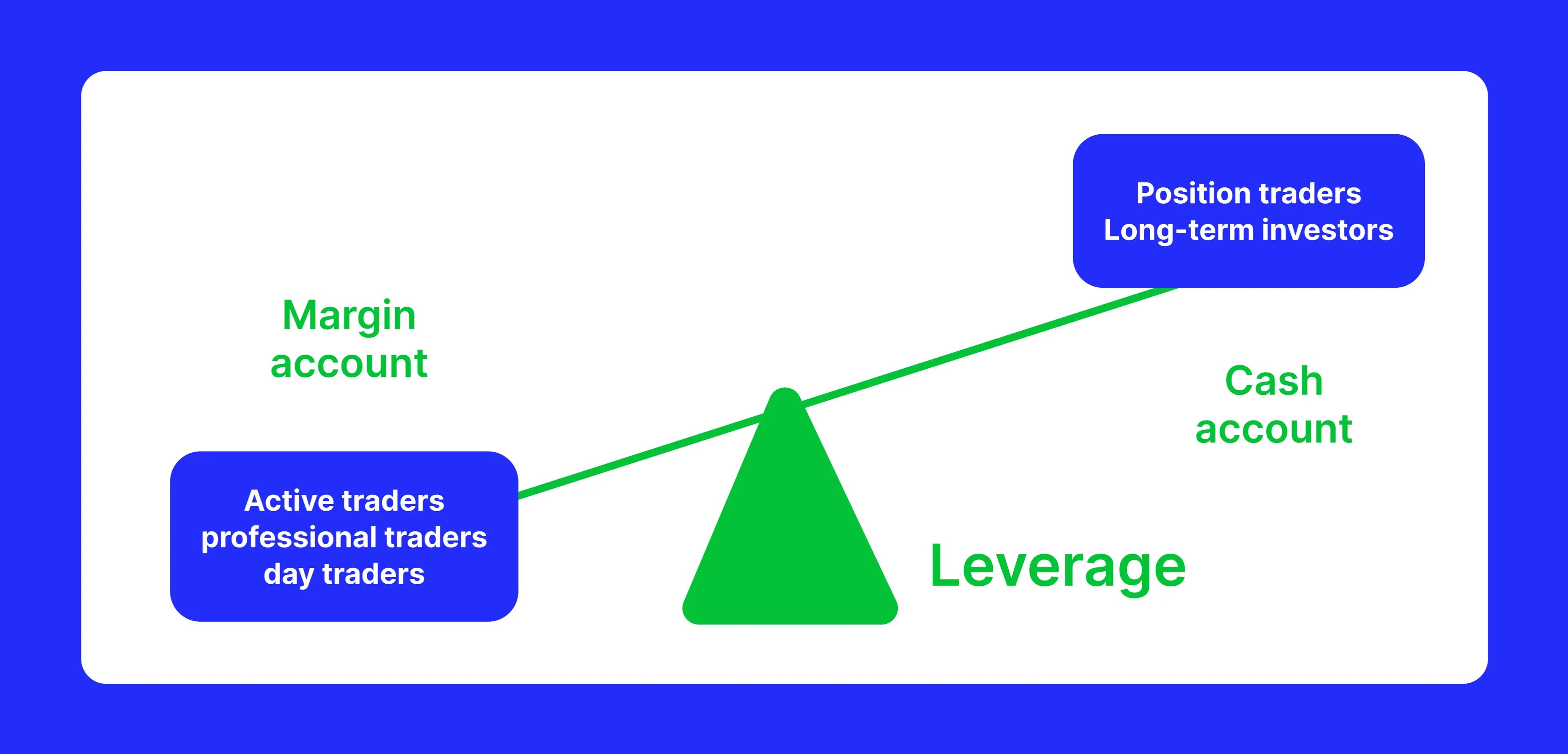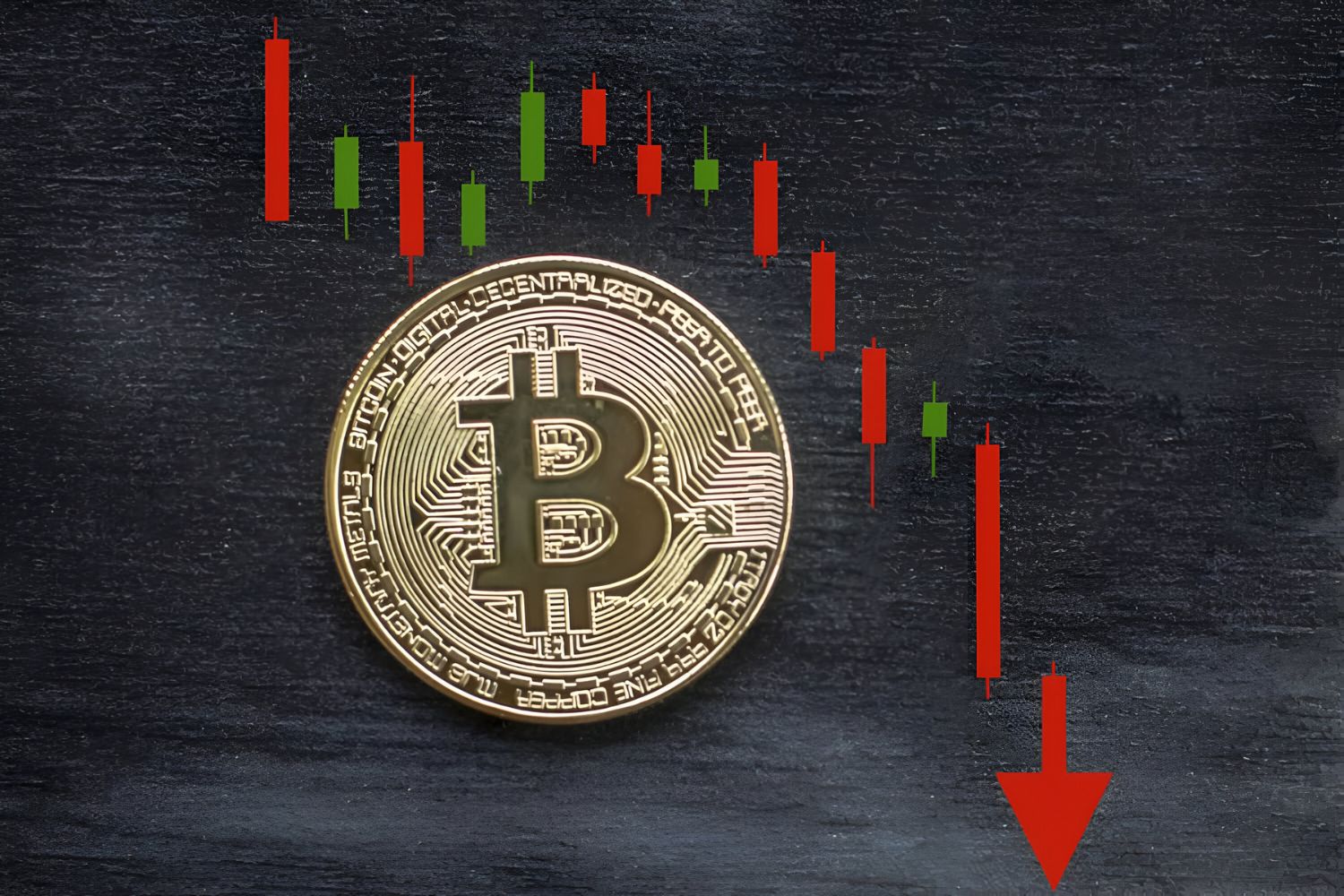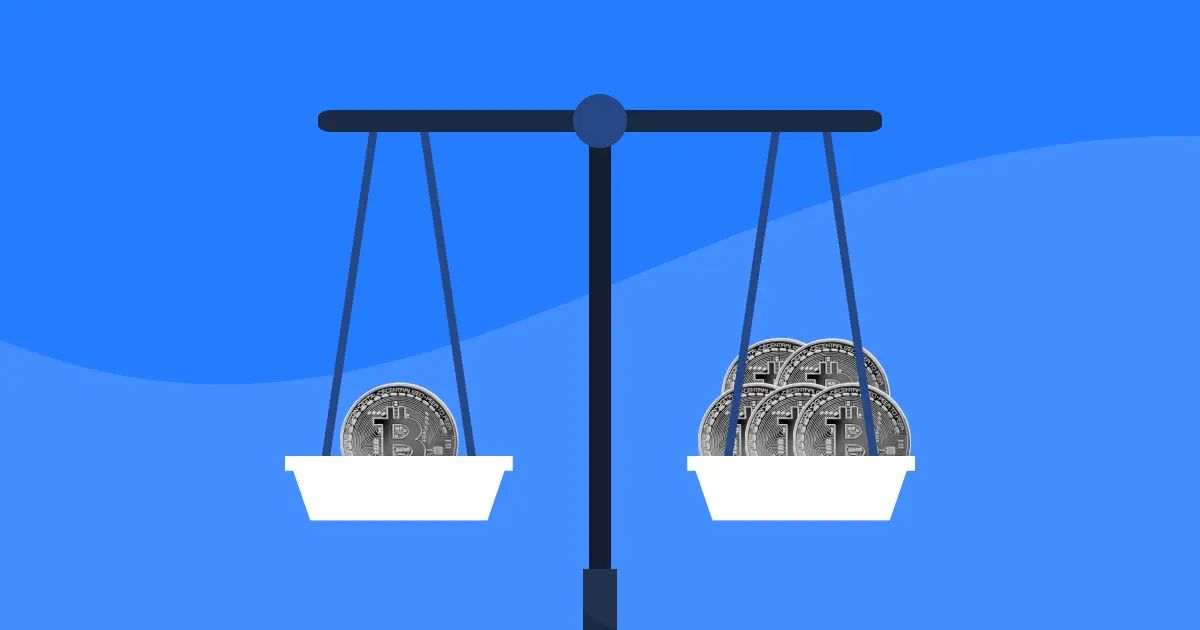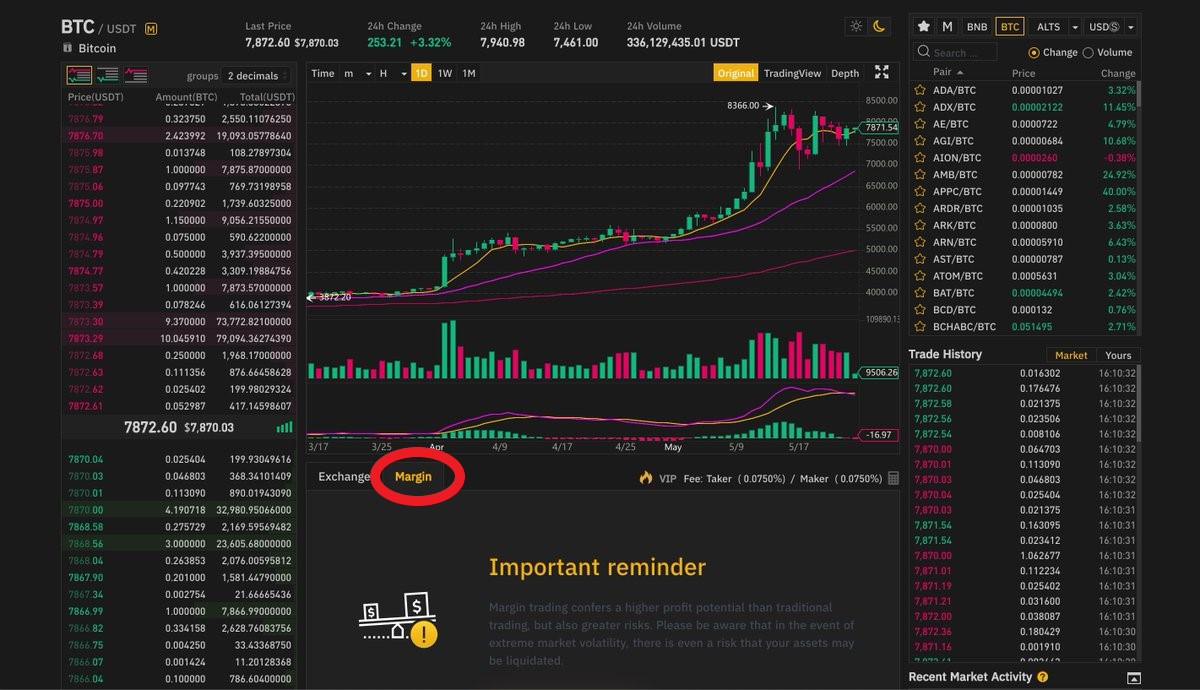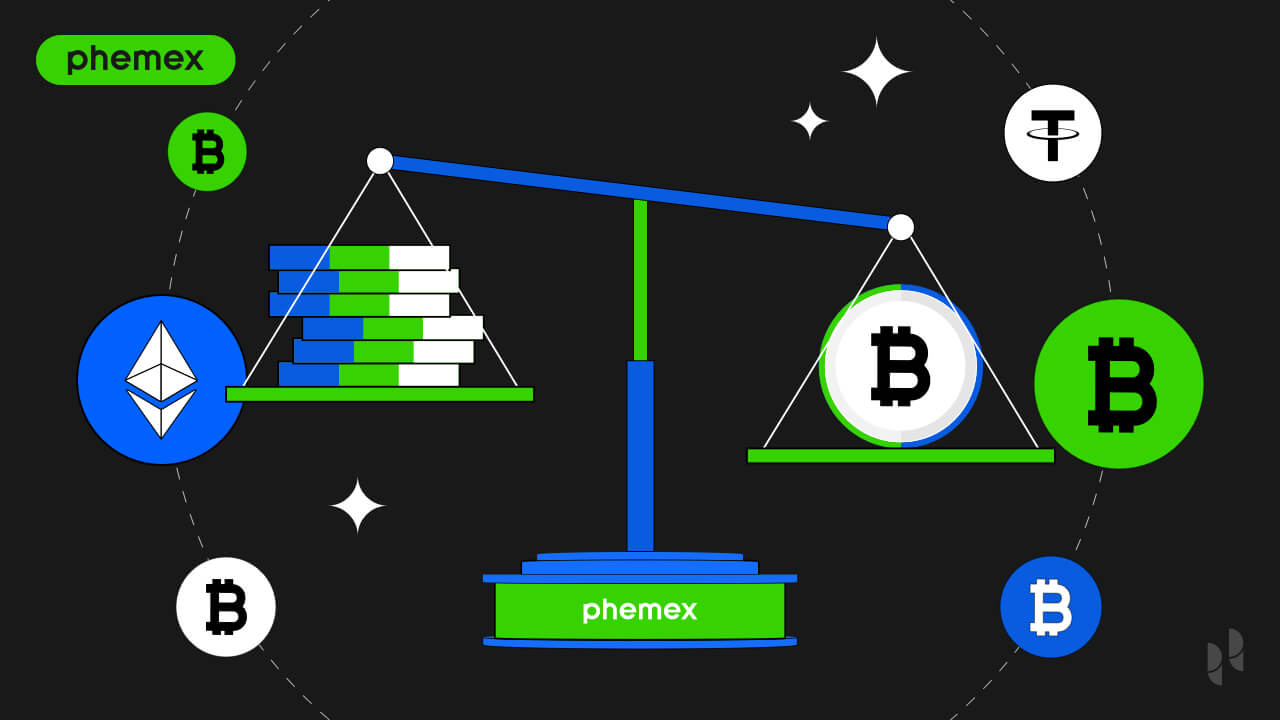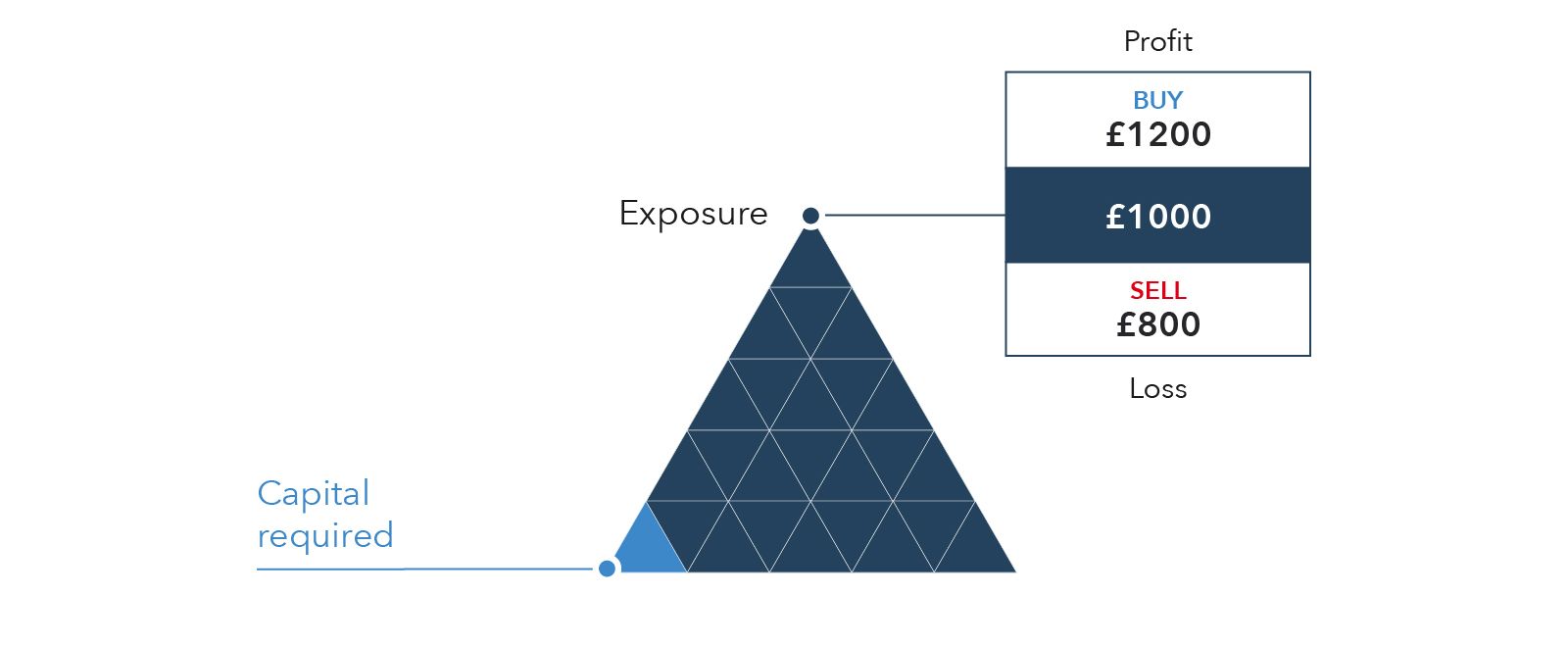What Is a Margin Account in Trading
In the world of trading, a margin account is a type of brokerage account that allows investors to borrow funds from a broker to trade various financial instruments. Unlike a cash account where you can only trade with the available funds, a margin account provides leverage, enabling traders to gain exposure to larger positions and potentially increase their profits.
When you open a margin account, you deposit a certain amount of capital, known as the initial margin, that serves as a collateral for the funds you borrow from the broker. This initial margin requirement typically represents a percentage of the total value of the trade. The borrowed funds allow you to buy more shares or contracts than you could with just your own funds, magnifying the potential gains or losses.
One of the primary benefits of a margin account is the ability to engage in short selling. Short selling involves selling an asset that you don’t currently own with the expectation of buying it back at a lower price in the future. This strategy can be profitable in a falling market. With a margin account, you can borrow the shares you need to sell and then repay the loan by buying them back at a cheaper price.
Another advantage of margin trading is the potential to earn interest on the cash and securities held in the account. While you’re not required to use the margin loan immediately, you can invest the borrowed funds or keep them as a cushion for future trading opportunities. Additionally, some brokers may offer discounted interest rates for margin loans, making it a cost-effective option for traders.
However, it’s important to note that margin accounts come with inherent risks. The leverage provided by margin trading amplifies both profits and losses. If the trade goes against you, you may end up owing more money than you initially deposited. This is known as a margin call and could result in the broker liquidating your positions to cover the losses.
In summary, a margin account in trading allows investors to borrow funds to trade larger positions and potentially increase profits. It offers the flexibility to engage in short selling and earn interest on the borrowed funds. However, traders must be aware of the risks associated with margin trading, including the possibility of a margin call and increased losses. It’s essential to carefully assess your risk tolerance and have a solid trading plan in place before utilizing a margin account.
Benefits of a Margin Account
Opening a margin account provides traders with several advantages that can enhance their trading experience and potentially increase their profits. Here are some key benefits of using a margin account in trading:
- Increased Buying Power: One of the primary benefits of a margin account is the ability to leverage your existing capital. By borrowing funds from the broker, you can increase your buying power and trade larger positions than you would with just your own funds. This allows you to take advantage of more trading opportunities and potentially generate higher returns.
- Short Selling Opportunities: Margin accounts offer the flexibility to engage in short selling. Short selling involves selling assets that you don’t currently own in anticipation of buying them back at a lower price in the future. With a margin account, you can borrow the shares you need to sell, opening up opportunities to profit from downward price movements in the market.
- Interest on Idle Funds: If you have available cash or securities in your margin account that you’re not using for trading, you may earn interest on these idle funds. Some brokers offer competitive interest rates on the cash and securities held in margin accounts, allowing you to benefit from potential earnings even when you’re not actively trading.
- Cost-Effective Borrowing: Margin trading can be a cost-effective way to access additional funds for trading. Some brokers may offer discounted interest rates for margin loans, making it more affordable for traders to borrow money. This can help minimize trading costs and increase the potential profitability of trades executed through a margin account.
- Portfolio Diversification: With the increased buying power provided by a margin account, traders have the opportunity to diversify their portfolios and take positions in a wider range of assets. By spreading your investments across different securities or asset classes, you can potentially reduce risk and capture opportunities in various market sectors.
While the benefits of a margin account can be appealing, it’s crucial to approach margin trading with caution. The leverage provided by margin accounts amplifies both potential profits and losses. It’s essential to have a solid understanding of risk management strategies and to carefully assess your risk tolerance before utilizing a margin account in your trading activities.
Margin Account Requirements
To open a margin account, brokerage firms typically require traders to meet specific requirements. These requirements are in place to ensure that traders have the financial capacity and understanding to manage the additional risks associated with trading on margin. Here are some common margin account requirements:
- Minimum Account Balance: Brokerages typically require a minimum account balance to open a margin account. This initial deposit serves as collateral for the funds borrowed from the broker. The minimum balance requirement varies among brokers, so it’s important to check with your chosen brokerage to determine their specific requirement.
- Age and Identification: Traders must meet the age requirement set by the brokerage to open a margin account. Usually, the minimum age is 18 years or older. Additionally, traders must provide valid identification documents, such as a government-issued ID or passport, to verify their identity.
- Trading Experience: Some brokerages may require a certain level of trading experience or knowledge before granting access to a margin account. This requirement ensures that traders have a basic understanding of the risks involved in margin trading and can make informed decisions.
- Creditworthiness: Since margin accounts involve borrowing funds from the broker, the trader’s creditworthiness often plays a role. Brokerages may assess the trader’s credit history and credit score to determine their ability to meet their financial obligations and repay the margin loan.
- Margin Rates: Different brokerages have varying margin rates, which represent the percentage of funds that the trader is required to deposit as collateral. Margin rates can differ based on the types of securities being traded, the trader’s account size, and the brokerage’s policies. It’s crucial to understand the margin rates imposed by your chosen brokerage before opening a margin account.
It’s important to note that meeting the initial requirements to open a margin account doesn’t guarantee ongoing access to margin trading. Once the account is opened, traders may also have to maintain specific margin requirements, such as a minimum maintenance margin, to continue using the margin account. Failure to meet these requirements may result in restrictions or the liquidation of positions by the brokerage.
Before opening a margin account, it’s essential to carefully review the requirements and consider whether you have the necessary financial resources, knowledge, and risk management skills to trade on margin. Thoroughly understanding and complying with the margin account requirements can help ensure a smoother and more successful trading experience.
Margin Trading and Leverage
Margin trading involves using borrowed funds from a broker to enter trades, allowing traders to amplify their exposure to markets and potentially increase their profits. The use of leverage is a key component of margin trading. Leverage enables traders to control larger positions with a smaller amount of capital. Here’s how margin trading and leverage work:
When you open a margin account, the broker provides you with a certain amount of leverage, typically expressed as a ratio. For example, a 2:1 leverage ratio means that for every dollar of capital you deposit, you can control two dollars’ worth of assets. This leverage ratio can vary depending on the broker and the specific securities being traded.
Let’s say you have $10,000 in your margin account and your chosen leverage ratio is 4:1. With this leverage, you can now control up to $40,000 worth of assets. This amplifies both potential gains and losses. If the value of your position increases by 5%, you would earn a profit of $2,000 ($40,000 x 0.05). However, if the position declines by 5%, you would face a loss of $2,000.
While leverage can magnify profits, it’s important to recognize that it also increases the risk level. Losses can exceed your initial investment, leading to a potential loss of capital. Therefore, it’s crucial to have a solid understanding of the risks involved and to implement proper risk management strategies when engaging in margin trading.
Additionally, leverage can vary depending on the asset class being traded. For example, some brokers may offer higher leverage for liquid and highly traded assets, such as major currency pairs, while providing lower leverage for more volatile or less liquid securities, such as penny stocks. It’s important to familiarize yourself with the leverage options available for different asset classes and to consider the associated risks and trading conditions.
It’s worth noting that leverage is a tool that requires responsible and disciplined use. While it can enhance potential returns, it can also lead to substantial losses if misused. Traders should carefully assess their risk tolerance, have a clear trading plan, and implement appropriate risk management techniques when utilizing leverage in margin trading.
In summary, margin trading involves using borrowed funds to amplify trading positions, and leverage plays a crucial role in this process. Leverage allows traders to control larger positions with a smaller amount of capital, potentially increasing profits. However, leverage also increases risk, and traders must exercise caution and employ proper risk management strategies to protect their capital when engaging in margin trading.
Margin Account Risks
While margin trading can provide opportunities for increased profits, it also carries inherent risks. Traders need to be aware of and understand these risks before utilizing a margin account. Here are some key risks associated with margin accounts:
- Increased Risk and Market Volatility: Margin trading involves using leverage, which amplifies both potential gains and losses. This increased risk exposes traders to greater market volatility. Small price fluctuations in your trading position can result in significant profits or losses due to the leverage used in margin trading.
- Losses Exceeding Initial Investment: One of the significant risks of margin trading is the potential for losses to exceed your initial investment. If the market moves against your position, you may be liable to repay borrowed funds and cover losses beyond your account’s value. It’s crucial to assess your risk tolerance and carefully manage the amount of leverage used to minimize the risk of substantial losses.
- Margin Calls and Forced Liquidation: Margin accounts have maintenance margin requirements, which stipulate the minimum account equity that must be maintained. If the value of your account drops below this level, you may receive a margin call from your broker. A margin call requires you to deposit additional funds to meet the margin requirements. Failure to do so may result in the broker liquidating your positions to cover the losses, potentially locking in losses and reducing your capital.
- Interest Expenses: Borrowing funds from the broker in a margin account incurs interest expenses. The interest rates charged on margin loans can vary among brokers and depend on factors such as the size of the loan and the prevailing interest rates. It’s important to consider these interest expenses when calculating the potential profitability of margin trades and managing your overall trading costs.
- Inadequate Risk Management: Margin trading requires disciplined risk management. If traders are not diligent in setting stop-loss orders, applying appropriate risk-reward ratios, or monitoring their positions, they may expose themselves to excessive losses. Utilizing proper risk management techniques, such as diversifying your portfolio, employing trailing stop-loss orders, and setting realistic profit targets, can help mitigate the risks associated with margin trading.
It’s vital to educate yourself about the risks associated with margin trading and to thoroughly understand the terms and conditions provided by your broker. Developing a comprehensive trading plan and adhering to effective risk management strategies can help protect your capital and minimize the potential downsides of margin trading.
Margin Calls and Maintenance Margin
Margin calls and maintenance margin are crucial concepts to understand when trading on margin. These terms relate to the requirements set by brokers to ensure that traders maintain a sufficient level of equity in their margin accounts. Let’s dive deeper into margin calls and maintenance margin:
Margin Calls: A margin call occurs when the equity in your margin account falls below the required maintenance margin level set by your broker. When this happens, the broker may request additional funds to bring your account back up to the required level. Margin calls are intended to protect both the trader and the broker from excessive losses and to ensure that traders are maintaining sufficient collateral in their accounts. Failure to meet a margin call may result in the broker liquidating some or all of your positions to cover the losses.
Maintenance Margin: Maintenance margin is the minimum amount of equity that you must maintain in your margin account as a percentage of the total value of your position. This percentage requirement is set by the broker and can vary depending on the specific securities being traded. When the equity in your account falls below the maintenance margin level, a margin call is triggered. It’s essential to be aware of the maintenance margin requirement for each asset class or security you trade, as it directly impacts the amount of leverage you can use and the risks you are exposed to.
It’s crucial to have a solid understanding of margin calls and maintenance margin to effectively manage your margin account. Here are a few key considerations to keep in mind:
- Risk Management: Proper risk management is vital in margin trading to prevent margin calls. Setting appropriate stop-loss orders, calculating position sizes based on available capital, and regularly monitoring your account’s equity can help minimize the risk of margin calls and potential losses.
- Capital Allocation: Careful consideration should be given to the allocation of capital in your margin account. Allocating too much capital to a single position increases the risk of a margin call if the trade goes against you. Diversifying your portfolio and spreading your investments across different assets can help mitigate this risk.
- Monitoring and Communication: It’s essential to closely monitor your margin account regularly to ensure you stay above the maintenance margin level. Additionally, maintaining open lines of communication with your broker can help you stay informed about any changes to margin requirements or potential margin calls.
- Proper Leverage Usage: Using leverage is a double-edged sword. While it can amplify profits, it also increases the risk of margin calls and larger losses. Striking a balance between the amount of leverage used and your risk tolerance is crucial. Too much leverage may leave you vulnerable to margin calls, while too little leverage may limit your potential gains.
Understanding margin calls and maintenance margin is essential to effectively manage a margin account. By implementing proper risk management techniques, diversifying your investments, and closely monitoring your account’s equity, you can minimize the likelihood of margin calls and ensure a more sustainable trading experience.
How to Open a Margin Account
Opening a margin account is a straightforward process, but it requires careful consideration and adherence to specific steps. Here’s a guide on how to open a margin account:
- Choose a Broker: Research and select a reputable brokerage firm that offers margin trading services. Look for a broker with competitive fees, strong customer support, and a user-friendly trading platform that meets your needs.
- Complete the Application: Once you’ve chosen a broker, visit their website and locate the account application page. Fill out the required information, which typically includes personal details, financial information, and trading experience. Be honest and accurate in your responses.
- Read and Understand the Margin Agreement: As part of the application process, you’ll need to review and accept the broker’s margin agreement. This document outlines the terms and conditions of trading on margin and the associated risks. Read it thoroughly to understand your obligations and the broker’s responsibilities.
- Make an Initial Deposit: Most brokers require an initial deposit to open a margin account. The minimum deposit amount can vary, so ensure that you have enough funds available to meet the broker’s requirement. The initial deposit serves as collateral for the funds you can borrow to trade on margin.
- Sign Required Documents: Depending on the broker, you may need to sign additional documents, such as risk disclosure forms or customer agreements. Carefully read and understand all documents before signing them, and reach out to the broker’s customer support if you have any questions or concerns.
- Wait for Approval: After submitting your application, the broker will review it and conduct any necessary verifications. This process may take a few days to a couple of weeks. Once your application is approved, you’ll receive confirmation that your margin account has been opened and is ready for use.
- Educate Yourself: Before engaging in margin trading, take the time to familiarize yourself with the rules, regulations, and risks associated with margin accounts. Educate yourself on margin requirements, leverage, margin calls, and other relevant concepts. Learning about risk management strategies and implementing them in your trading plan is crucial for successful margin trading.
- Start Trading with Caution: Once your margin account is open, you can begin trading on margin. However, it’s essential to approach margin trading with caution. Start with small positions and gradually increase your exposure as you gain experience and confidence. Use appropriate risk management techniques to protect your capital and minimize the potential impact of adverse market movements.
Opening a margin account can provide opportunities for increased trading flexibility and potential profits. However, it’s important to fully understand the risks involved and to trade responsibly. Following these steps and educating yourself on margin trading will enable you to make informed decisions and effectively utilize a margin account.
Trading Strategies for Margin Accounts
Margin accounts provide traders with increased buying power and leverage, allowing them to potentially amplify their profits. However, trading on margin also comes with increased risks. It’s important to implement effective trading strategies to make the most of your margin account while minimizing potential losses. Here are some strategies to consider when trading on margin:
- Risk Management: Prioritize risk management to protect your capital in margin trading. Set stop-loss orders to limit potential losses and stick to your predetermined risk-reward ratio. Use proper position sizing techniques that account for the leverage being used, ensuring that potential losses are within your risk tolerance.
- Technical Analysis: Utilize technical analysis to identify entry and exit points for your trades. Use technical indicators, chart patterns, and trend analysis to make informed trading decisions. Technical analysis can help you identify potential support and resistance levels, which can be valuable when setting stop-loss and take-profit levels.
- Fundamental Analysis: Combine fundamental analysis with technical analysis to make well-rounded trading decisions. Stay updated on economic news, earnings reports, and other relevant information that can impact the securities you’re trading. Fundamental analysis can provide insight into the overall strength and direction of the market and help you make more informed trading decisions.
- Diversification: Diversify your portfolio to spread risk across different assets and markets. Avoid having a concentrated position in a single security or sector. By diversifying, you reduce the impact of any single trade or market event on your overall portfolio, enhancing the stability and potential profitability of your margin account.
- Trend Following: Follow the trend in the market to capitalize on momentum. Identify the prevailing trend using technical analysis tools and confirm it with indicators or chart patterns. Enter trades in the direction of the trend, aiming to ride the trend for as long as possible while managing risk through trailing stop-loss orders.
- Short Selling: Take advantage of the ability to short sell in a margin account. Short selling allows you to profit from decreasing prices by selling borrowed shares and buying them back at a lower price. Identify stocks or assets that you believe are overvalued or likely to decline and initiate short positions accordingly.
Remember that successful trading strategies require discipline, practice, and continuous learning. It’s crucial to thoroughly understand the strategies you employ and adapt them to changing market conditions. Regularly analyze your performance, identify areas for improvement, and refine your trading strategies accordingly.
Lastly, always remain aware of the risks involved in margin trading and the possibility of margin calls. Implementing appropriate risk management techniques and maintaining sufficient equity in your account are essential for effective margin trading.
Conclusion
Margin accounts offer traders the opportunity to increase their buying power and potentially amplify profits through leverage. However, it is important to understand and manage the risks associated with margin trading. By opening a margin account, traders can enjoy benefits such as increased flexibility, short selling opportunities, and the potential to earn interest on idle funds. However, margin trading also carries inherent risks, including the potential for losses to exceed the initial investment and the possibility of margin calls and forced liquidation.
To open a margin account, traders must meet specific requirements set by brokerage firms, such as minimum account balances, age and identification verification, trading experience, and creditworthiness. Once a margin account is opened, traders must maintain the necessary equity to meet the maintenance margin requirement and avoid margin calls.
Implementing proper risk management strategies, diversifying the portfolio, and thoroughly understanding margin trading concepts like leverage, margin calls, and maintenance margin are essential for successful margin trading. Traders should also consider utilizing technical and fundamental analysis, diversifying their portfolio, and following disciplined trading strategies.
In summary, margin accounts can provide traders with greater trading opportunities and potential profitability, but they also come with increased risks. It is crucial to approach margin trading with caution and to educate oneself on the risks involved. By implementing effective risk management techniques, adhering to trading strategies, and continual learning and adaptation, traders can aim for success in margin trading while minimizing potential losses.







